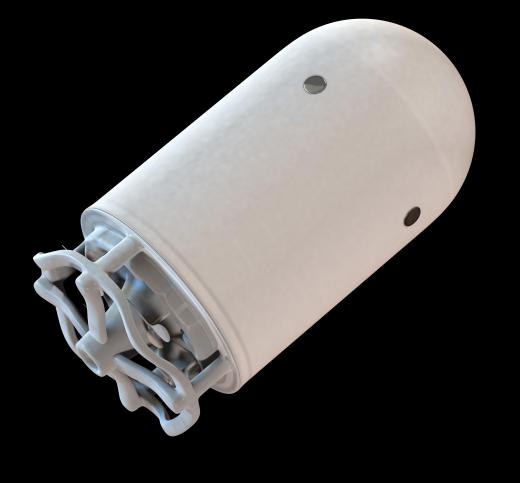What is Molecular Nanotechnology (MNT)?
 Michael Anissimov
Michael Anissimov
Molecular nanotechnology ("MNT") is an anticipated manufacturing technology that would allow precise control and positional assembly of molecule-sized building blocks through the use of nano-scale manipulator arms. Molecular nanotechnology is usually considered distinct from the more inclusive term "nanotechnology", which is now used to refer to a wide range of scientific or technological projects that focus on phenomena or properties of the nanometer scale (around 0.1-100nm). Nanotechnology is already a blossoming field, but molecular nanotechnology — the goal of productive, molecular-scale machine systems — is still in the preliminary research stage.
Nanotechnology was first introduced in 1959, in a talk by the Nobel Prize-winning physicist Richard Feynman, entitled "There's Plenty of Room at the Bottom". Feynman proposed using a set of conventional-sized robot arms to construct a replica of themselves, but one-tenth the original size, then using that new set of arms to manufacture an even smaller set, and so on, until the molecular scale is reached. If we had many millions or billions of such molecular-scale arms, we could program them to work together to create macro-scale products built from individual molecules — a "bottom-up manufacturing" technique, as opposed to the usual technique of cutting away material until you have a completed component or product — "top-down manufacturing".

Feynman's idea remained largely undiscussed until the mid-80s, when the MIT-educated engineer K. Eric Drexler published "Engines of Creation", a book to popularize the potential of molecular nanotechnology. Because MNT would allow manufacturers to fabricate products from the bottom up with precise molecular control, a very wide range of chemically possible structures could be created. Since MNT systems could put every molecule in its specific place, molecular manufacturing processes could be very clean and efficient. Also, because every little bit of matter in an molecular nanotechnology system would be part of a nano-scale manipulator, nanotechnological systems could be far more productive and maintain much higher throughputs than modern manufacturing techniques, which use macro-scale manipulators to fabricate products.
To initiate an MNT revolution would require an "assembler" — a reprogrammable nano-scale manipulator capable of creating a wide range of molecular structures, including a complete copy of itself. The first assemblers will only function effectively in lab-controlled environments, such as a vacuum. The advent of self-replicating molecular nanomachines could quickly lead to "desktop nanofactories", tabletop appliances that consume modest amounts of power and contain the software required to manufacture an interesting range of useful products. The arrival of MNT would revolutionize wide sectors of human activity, including manufacturing, medicine, scientific research, communication, computing, and warfare. When full-blown molecular nanotechnology will arrive is currently unknown, but some experts foresee its arrival sometime between 2010 and 2030.
AS FEATURED ON:
AS FEATURED ON:











Discussion Comments
Nanotechnology will be the next scientific storm. Without its help, the next step cannot occur. I am the writer of nanotechnology book in Bangladesh. Our country is not established by the nano but I will try. That's why developed countries need to explore nanotechnology in Bangladesh. Rizwan O.
Nanotechnology is an area of science. It might have been applied to producing wrinkle-free materials, but it is also applied to a plethora of other uses, such as for making dental materials stronger, self-cleaning windows, and automobile paint that lasts longer. The way the science can be applied to products is endless.
Isn't Nanotechnology a wrinkle resistant procedure? What are apparel wrinkle resistant options?
Post your comments